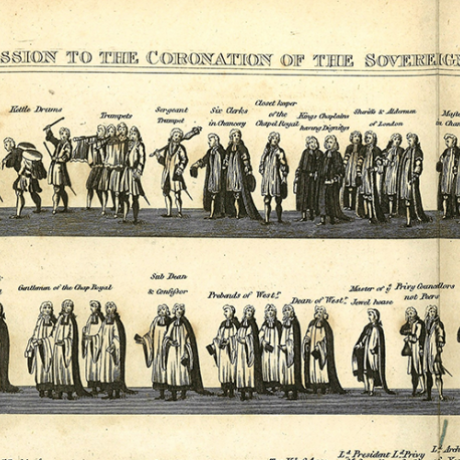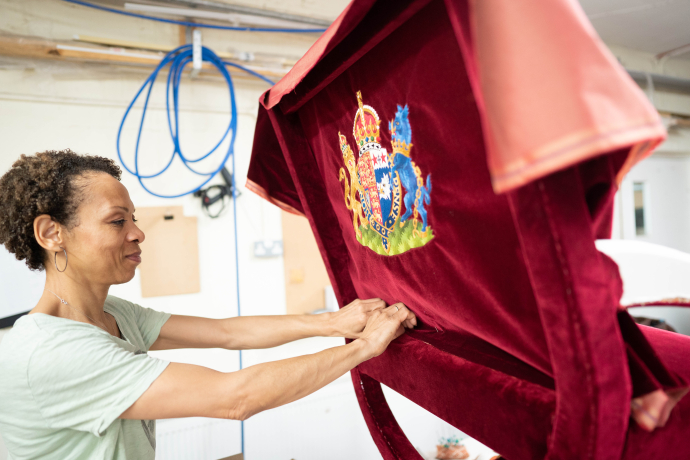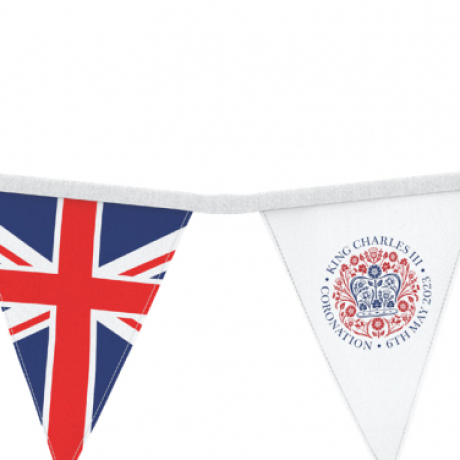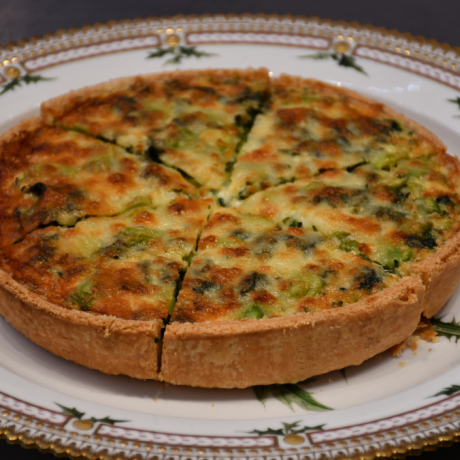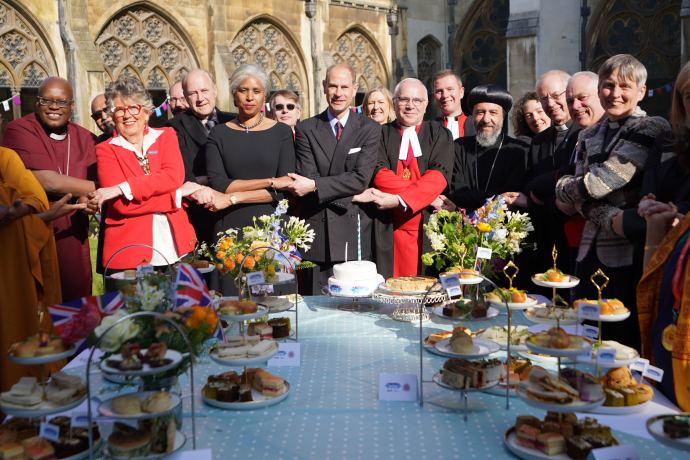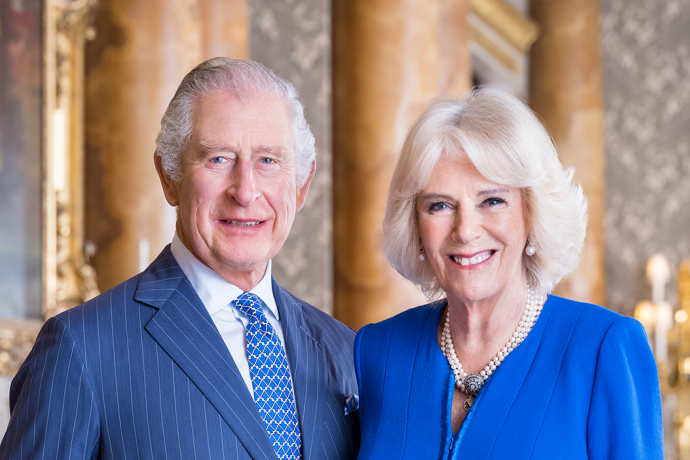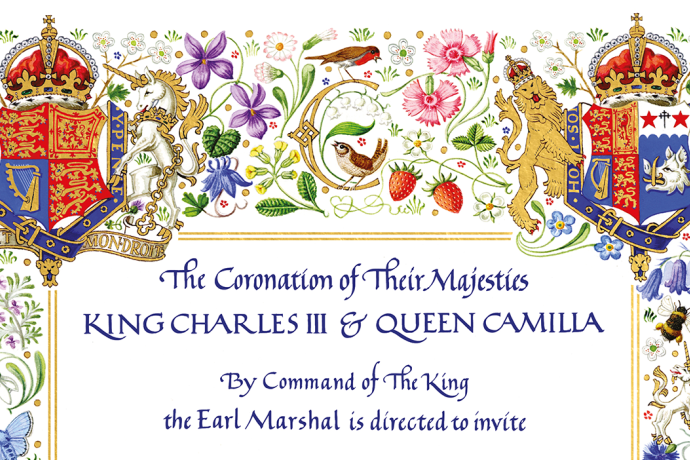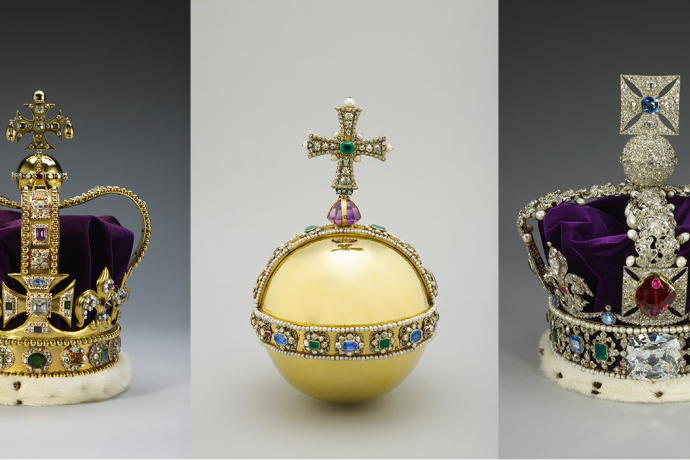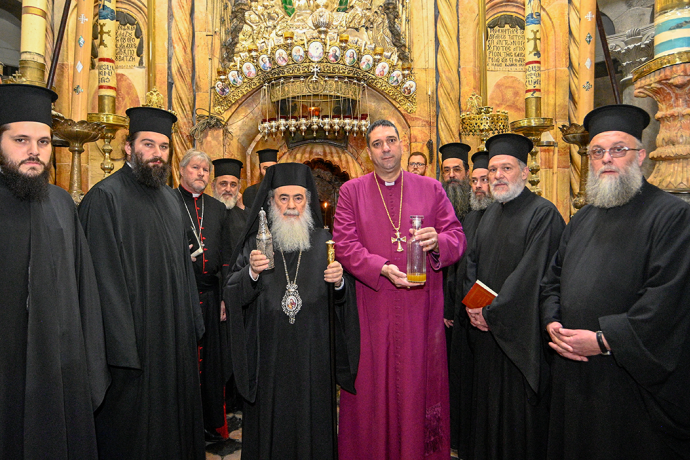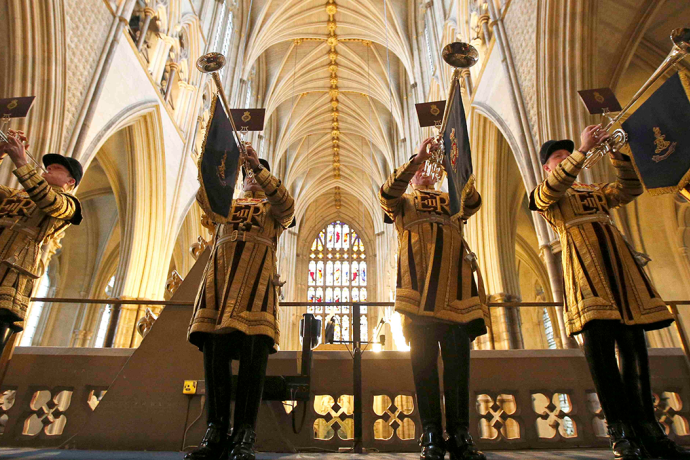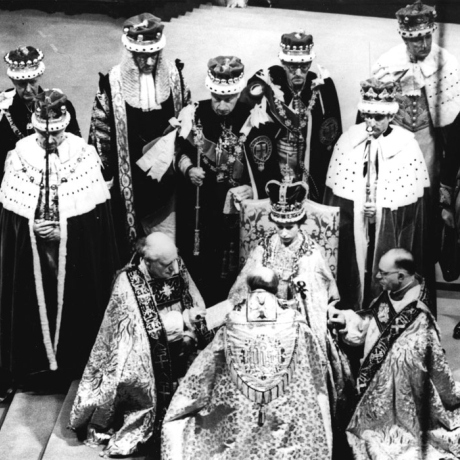- Introduction
- King George III and Queen Charlotte
- King George IV
- William IV and Queen Adelaide
- Queen Victoria
- King Edward VII and Queen Alexandra
- King George V and Queen Mary
- King George VI and Queen Elizabeth
- Queen Elizabeth II
Introduction
Housed in the Round Tower at Windsor Castle, the Royal Archives are a collection of documents relating to the history of the British Monarchy over the last 250 years. The Royal Archives preserves the personal and official correspondence of Monarchs from George III (1760-1820) onwards, as well as administrative records of the departments of the Royal Household.
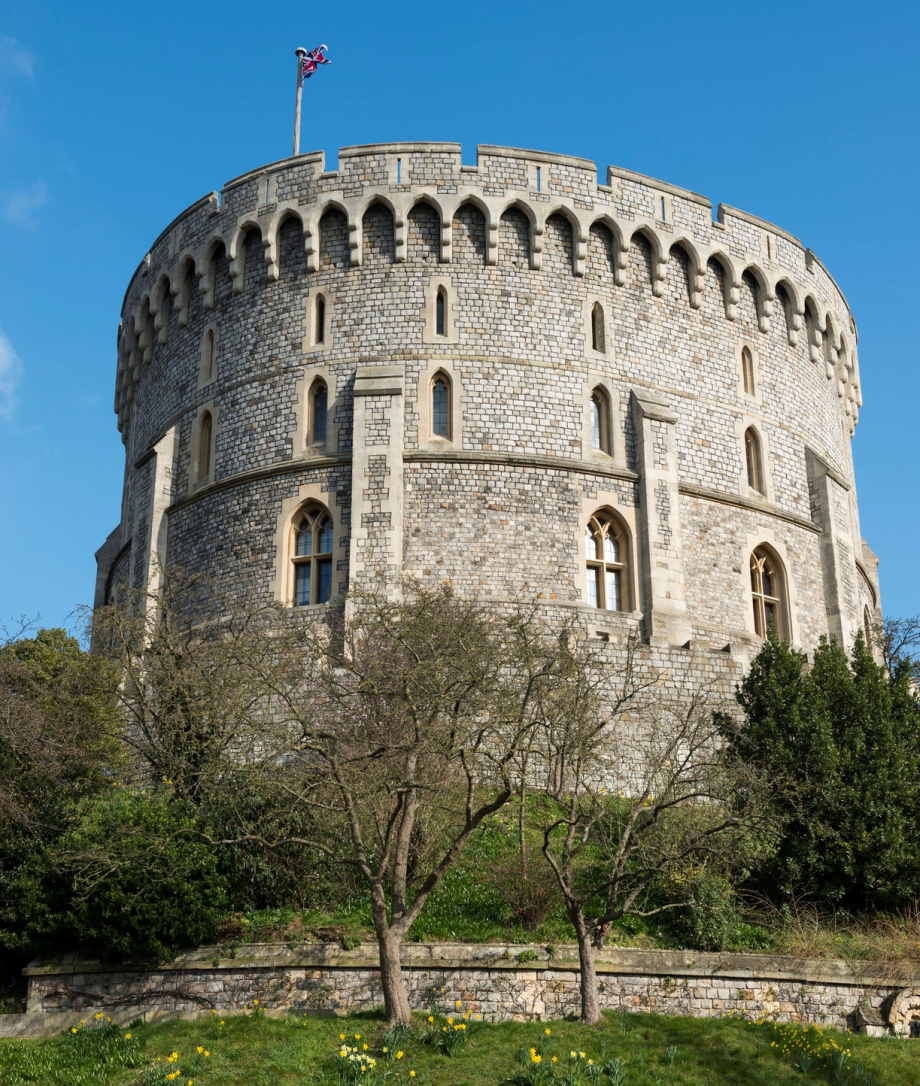
From diaries and personal letters to account books and speeches, the collections held by the Royal Archives record and reflect some of the most significant moments in British history and provide a fascinating insight into the life and work of past monarchs, their families, households and residences.
As we approach the Coronation of The King and The Queen Consort, the Royal Archives have shared some of their documents relating to Coronations throughout history.
King George III and Queen Charlotte
King George III acceded to the throne upon the death of his grandfather King George II on 25 October 1760. He married Princess Charlotte of Mecklenburg-Strelitz in the Chapel Royal, St James’s Palace, on 8 September 1761, having met each other for the first time on their wedding day.
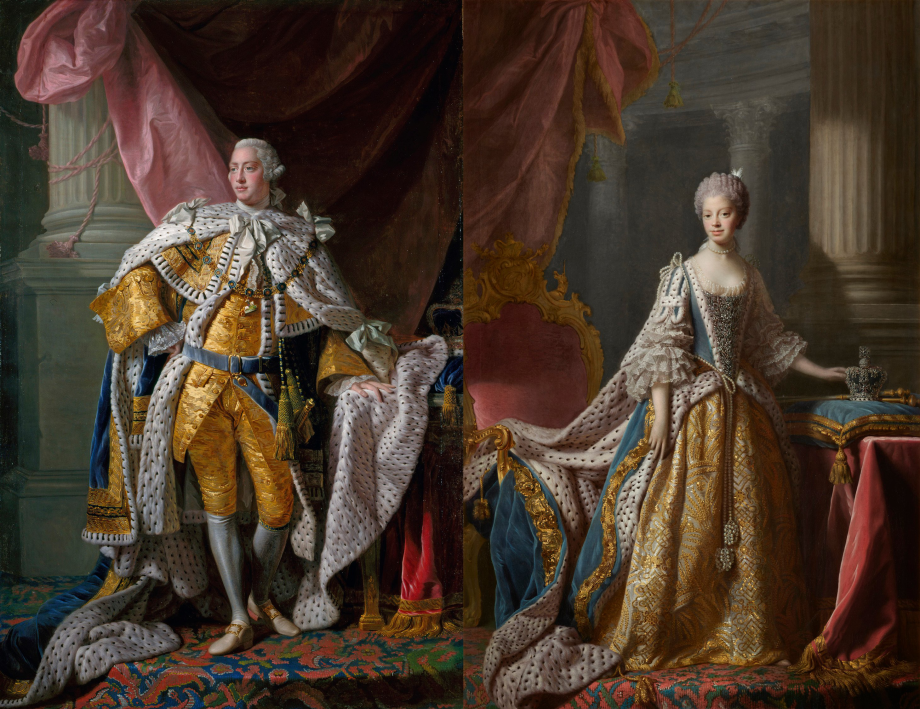
King George III acceded to the throne upon the death of his grandfather King George II on 25 October 1760. He married Princess Charlotte of Mecklenburg-Strelitz in the Chapel Royal, St James’s Palace, on 8 September 1761, having met each other for the first time on their wedding day.
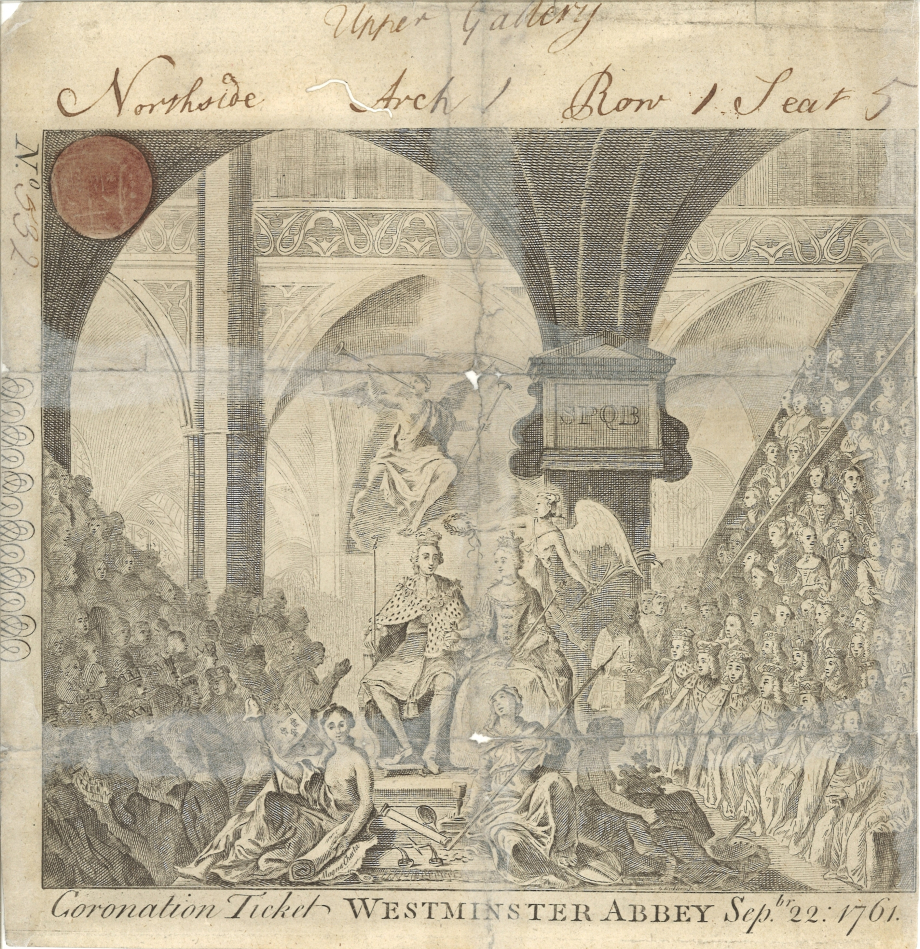
Admission ticket for the Upper Gallery of Westminster Abbey for the Coronation of King George III and Queen Charlotte on 22 September 1761.
The ceremony lasted many hours, and as the Archbishop of Canterbury climbed into the pulpit to deliver the sermon, many of the congregation took the opportunity to eat the food and wine that they had brought with them, resulting in the noisy clattering of plates, glasses and cutlery.
After the Coronation the King and Queen attended the Coronation banquet at Westminster Hall, a tradition that had started in the 12th Century, and during which the King’s Champion would ride into the hall in full armour and challenge anyone who disputed the Sovereign’s right to sit on the throne.
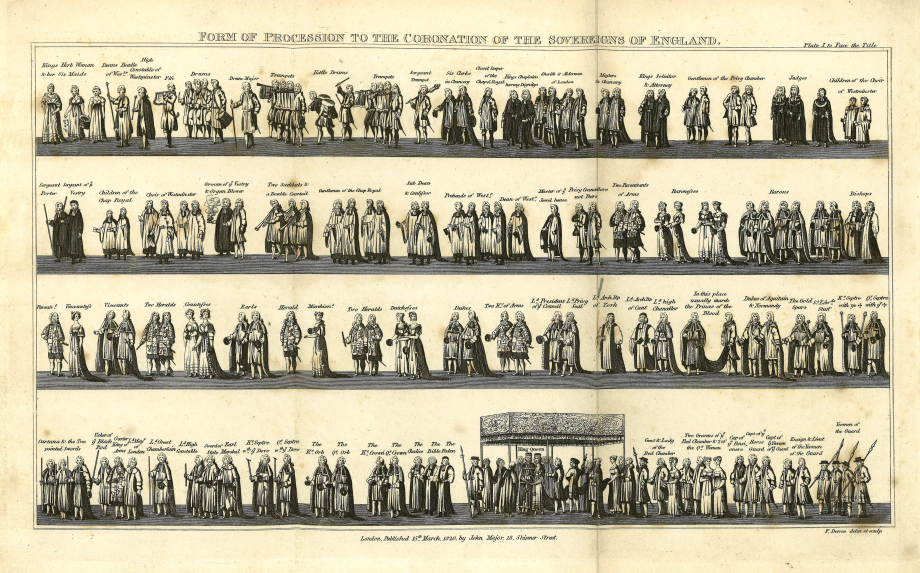
A copy of ‘A faithful account of the procession and ceremonies observed in the Coronation of the Kings and Queens of England: exemplified in that of their late most sacred majesties King George the Third and Queen Charlotte with all the other interesting proceedings connected with that magnificent festival’.
King George IV
King George IV acceded to the throne in 1820 following the death of his father King George III. The new King had become Prince Regent in 1811 due to his father’s poor health and as Prince of Wales and Regent, he was perhaps best known for his lavish and expensive lifestyle.
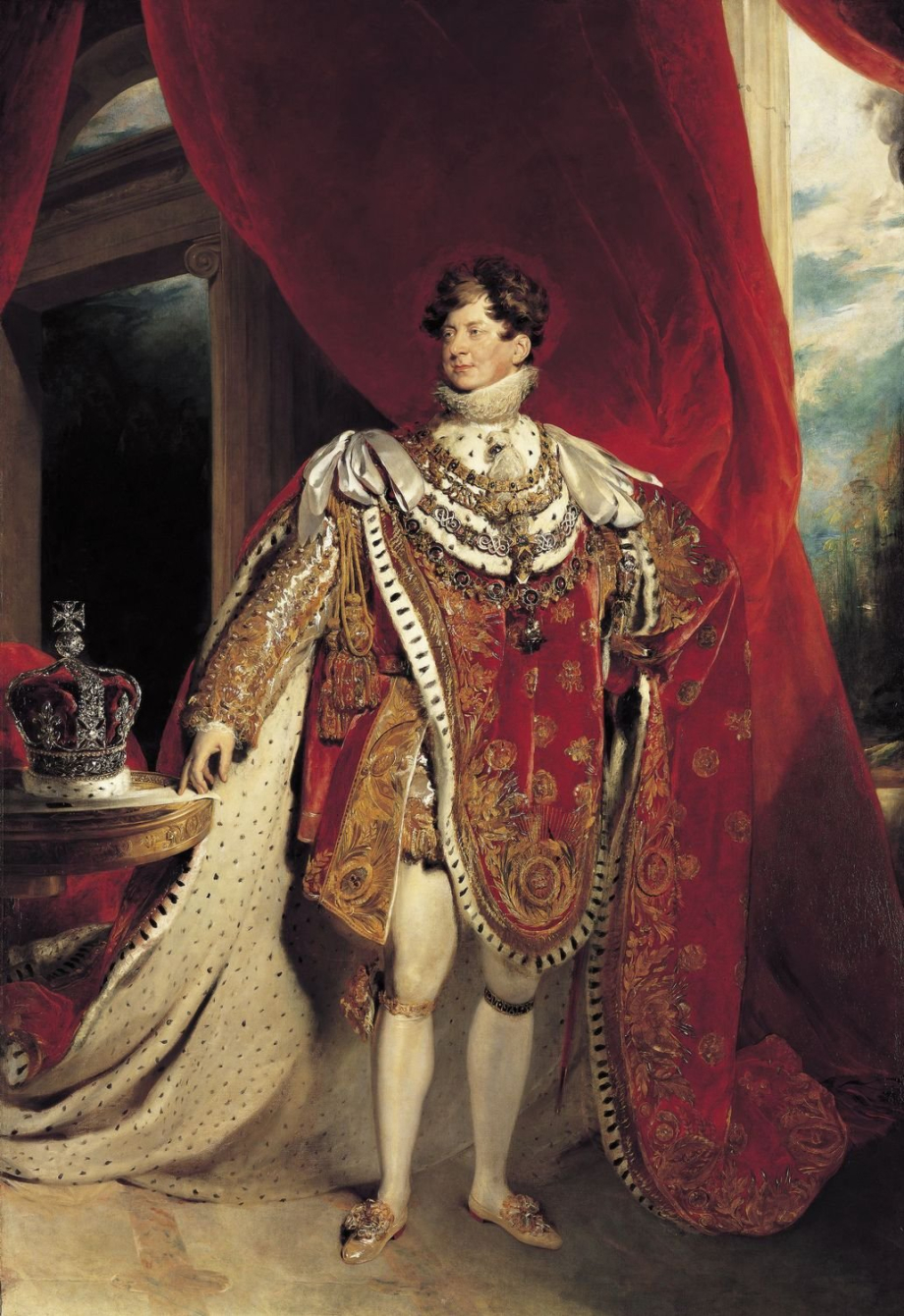
This extravagance and love of pageantry was very evident in King George IV’s Coronation on 19 July 1821 at Westminster Abbey, which cost nearly £240,000. This was in comparison to the Coronation of his father, which cost less than £10,000 in 1760 and that of his successor, King William IV, which amounted to £43,000 in 1831.
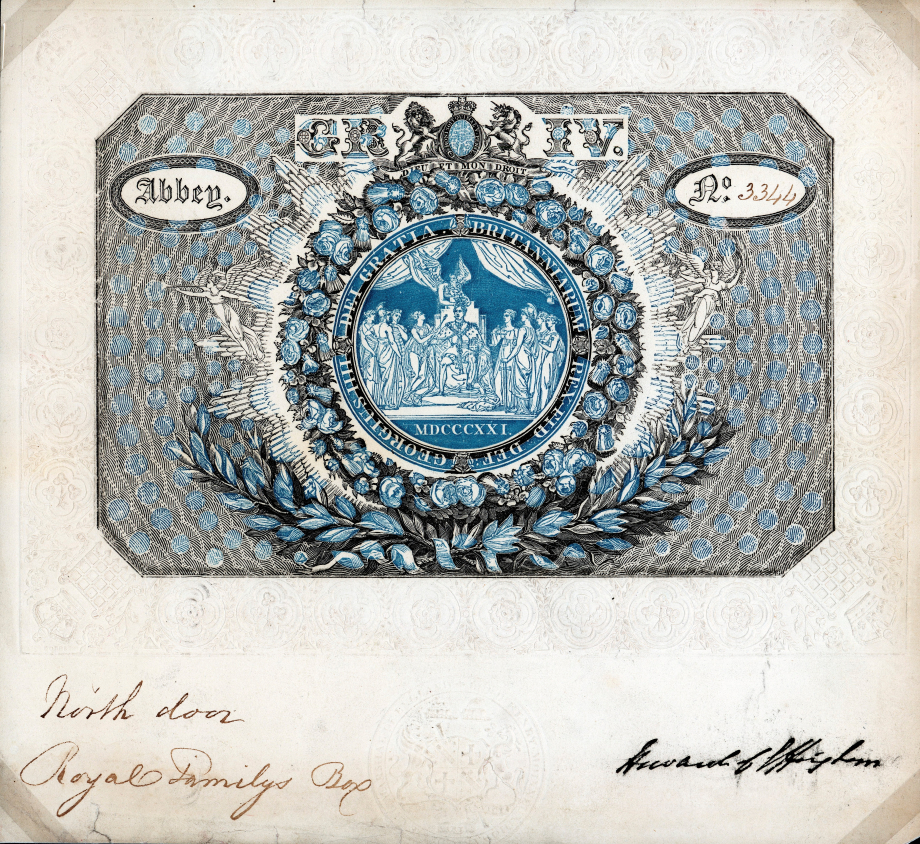
Admission card to the Royal Family’s Box in Westminster Abbey for the Coronation of King George IV on 19 July 1821. The card has been signed by the Deputy Earl Marshal, Lord Howard of Effingham.
It is believed the admission card was designed by Sir William Congreve (1772-1828), Equerry to King George IV and inventor of the military weapon, the Congreve Rocket.
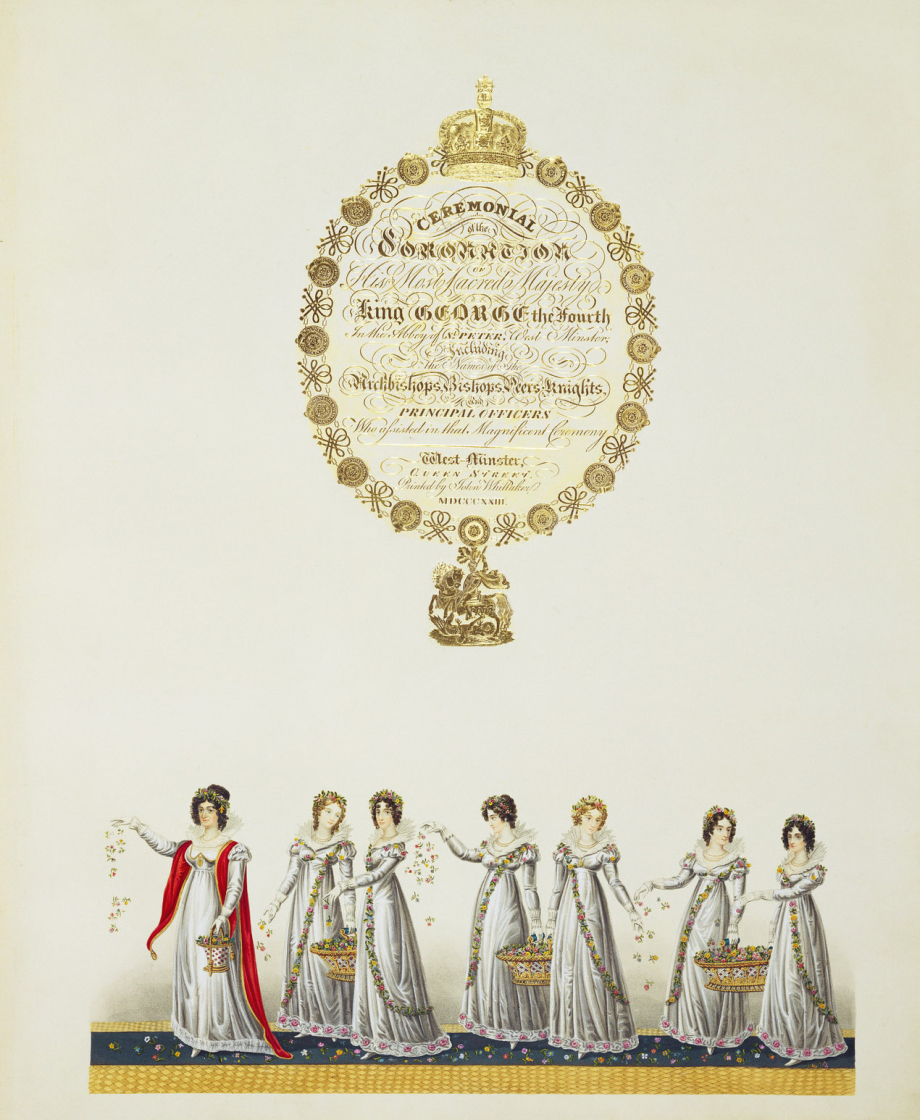
King George IV was the last Sovereign to include the Royal Herbstrewer in his Coronation procession, as King William IV did not include the role in his austere Coronation of 1831.
The Royal Herbstrewer and six attendants led the procession into Westminster Abbey strewing the carpet with sweet smelling flowers and herbs, a medieval antidote to evil smells and the plague.
William IV and Queen Adelaide
On 26 June 1830, at the age of 64, King William IV became the oldest person to accede to the British throne – a record held until the Accession of King Charles III in 2022. Unlike his extravagant brother, King George IV, he discouraged pomp and ceremony, an attitude which is evident in his low-key Coronation.
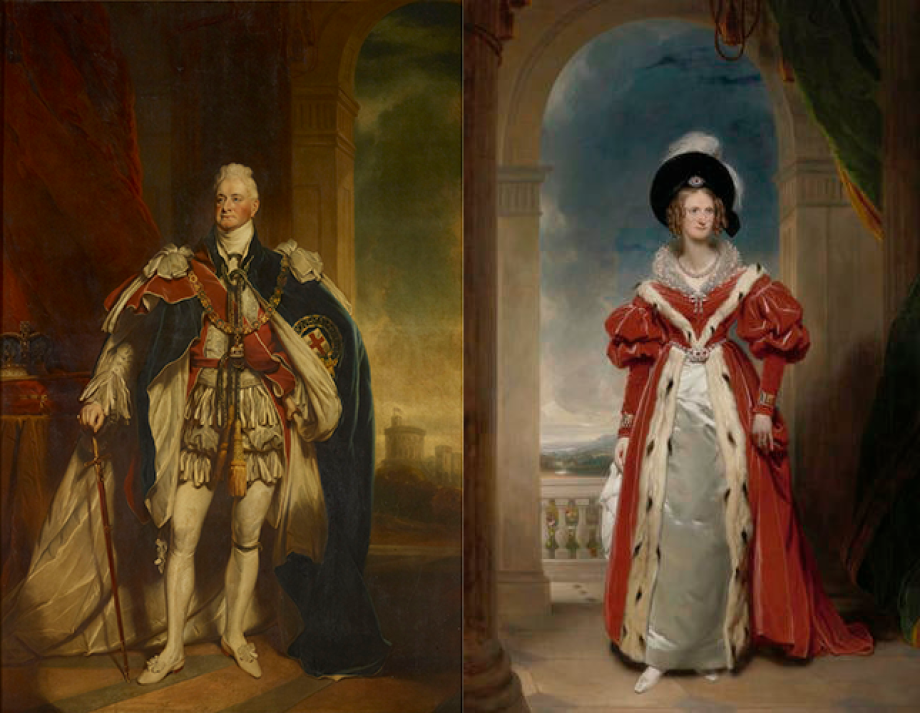
In fact, it appears that he did wish not to have a Coronation ceremony at all and instead proposed that that he should merely take the oath in front of the assembled Houses of Lords and Commons. However, the Duke of Wellington explained that the whole ceremony of the Coronation was essential and, if not observed, would deprive his subjects of their rights.
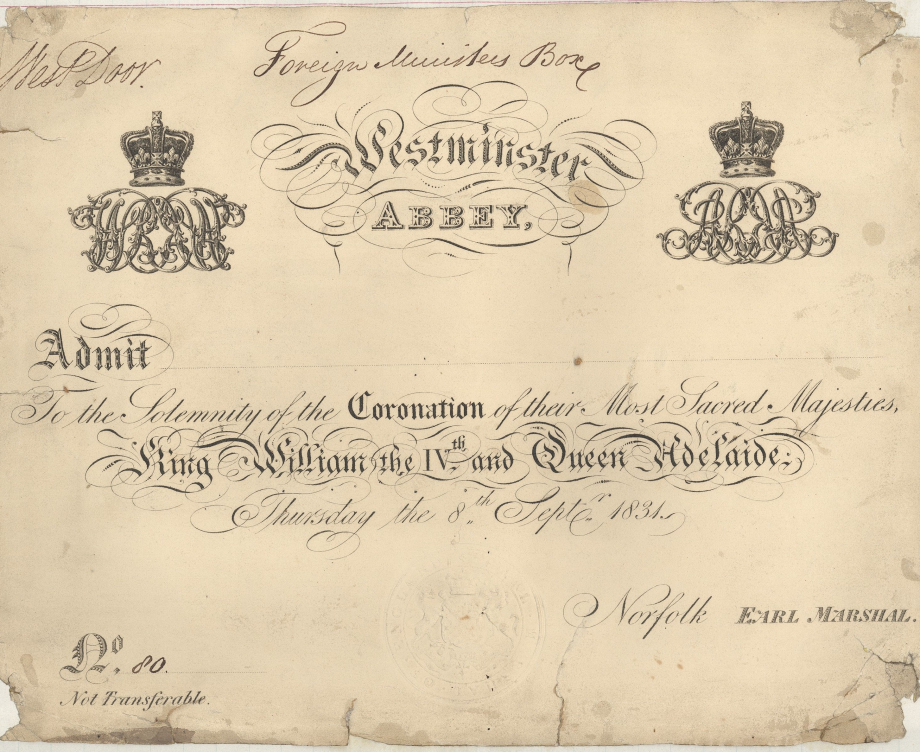
Admission ticket for the Coronation of King William IV and Queen Adelaide at Westminster Abbey. The ticket is of a plain design, simply depicting the personal cyphers of King William IV and Queen Adelaide.
William IV reluctantly agreed, however he insisted that the ceremony should be undertaken with as little fuss and expense as possible. As a result, the usual banquet at Westminster Hall was dispensed with; although he did instigate the State carriage procession to Westminster Abbey, an event which occurs to this day. The final cost of the Coronation, which took place on 8 September 1831, was a little over £40,000, a marked contrast to the Coronation of his brother ten years earlier.
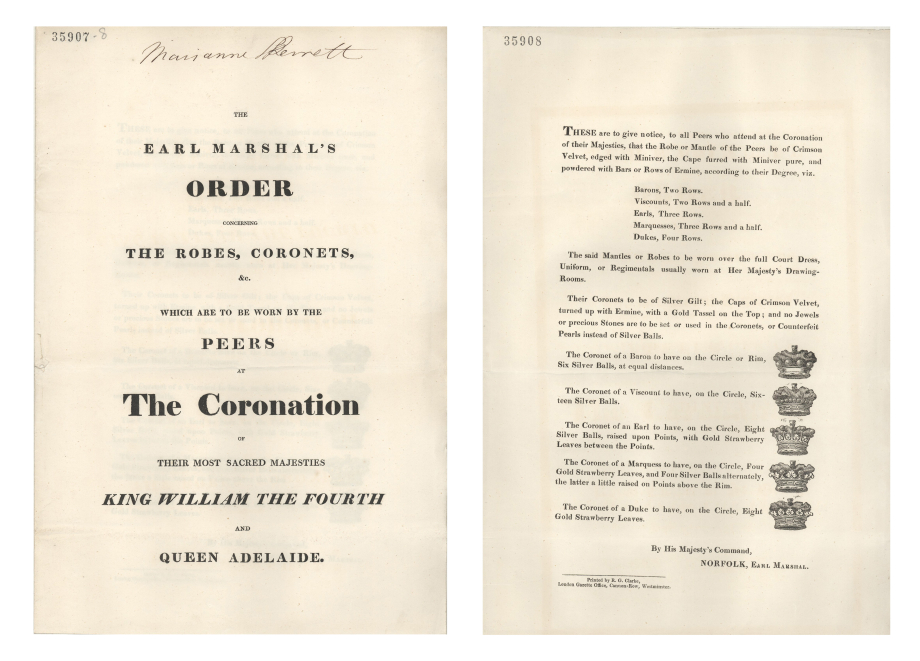
Earl Marshal’s Order concerning the Robes, Coronets etc, which are to be worn by the Peers at the Coronation of King William IV and Queen Adelaide. The page open on the right depicts images of the various types of Coronets worn by a Baron, Viscount, Earl, Marquess and Duke.
The copy of this document belonged to Marianne Skerrett, who was Dresser to Queen Victoria from 1837 to 1862, and it is unknown why this particular copy bears her name.
Queen Victoria
Princess Victoria became Queen at the age of eighteen when King William IV died on 20 June 1837. Victoria had known she would become Queen from an early age as her uncles, King George IV and King William IV, had no surviving legitimate children.
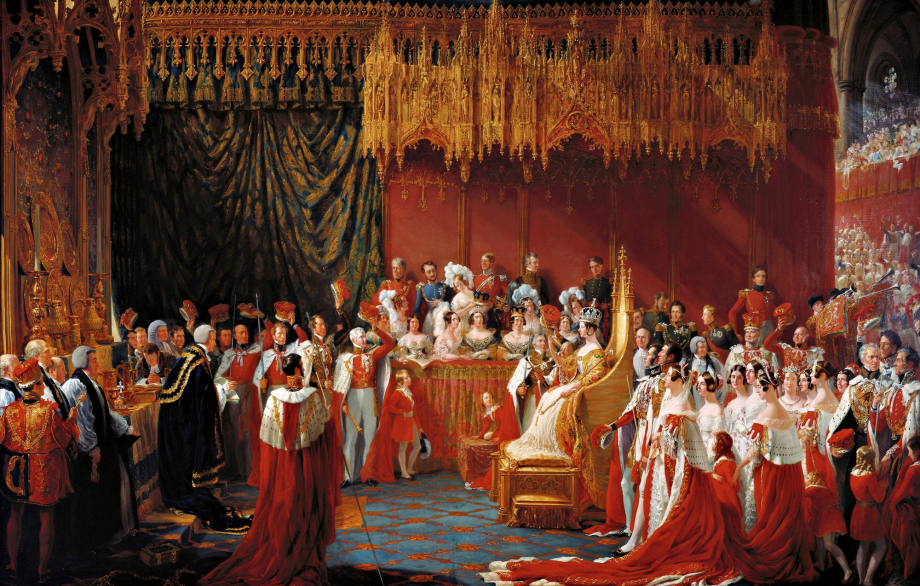
Queen Victoria’s Coronation was planned for 28 June 1838 and was much more of a grand and public occasion than the austere ceremony insisted upon by King William IV in 1831. It was decided that Queen Victoria would drive from Buckingham Palace to Westminster Abbey in full State procession. Around 400,000 people lined the streets to see the Coronation procession travel through London and the Queen, in the Gold State Coach pulled by eight cream horses, was overwhelmed by the crowds who had gathered to see her.
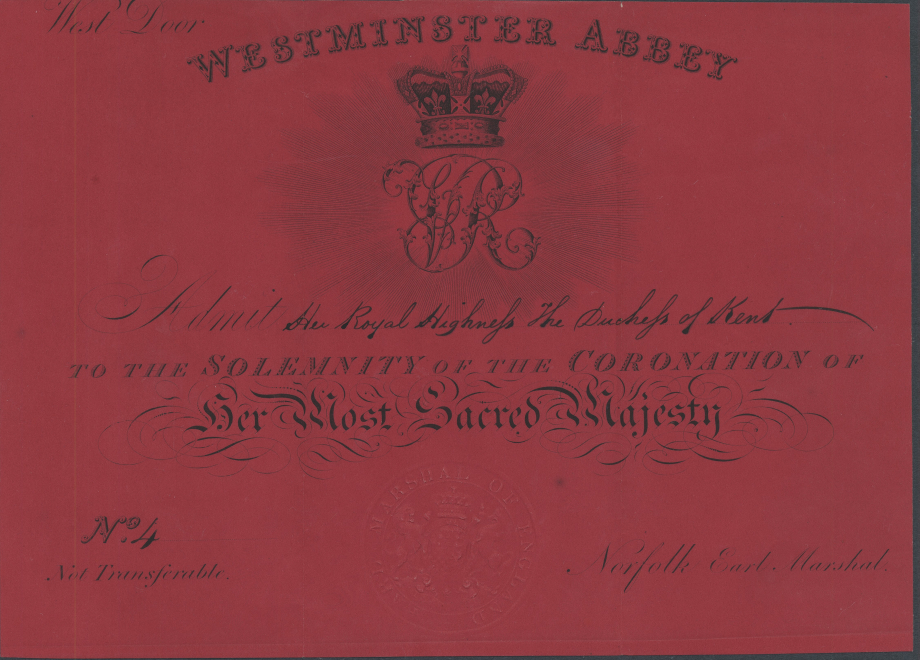
The Duchess of Kent’s admission ticket to the Coronation of Queen Victoria at Westminster Abbey on 28 June 1838.
On her arrival at Westminster Abbey, Queen Victoria was led in by her Prime Minister, Lord Melbourne, who carried the Sword of State, and was followed by eight train-bearers. The ceremony lasted five hours and did not go completely according to plan; the most notable difficulty concerned the Coronation ring which, as the Queen recorded in her journal, “The Archbishop had (most awkwardly) put the ring on the wrong finger, the consequence being that I had the greatest difficulty in taking it off again, which I at last succeeded in doing, but not without great pain”. Following the ceremony, the Queen travelled back to Buckingham Palace through even larger crowds and after dinner she went out on to the balcony to watch the fireworks in Green Park until after midnight. Queen Victoria later wrote in her journal that she would “ever remember this day as the proudest in my life”.
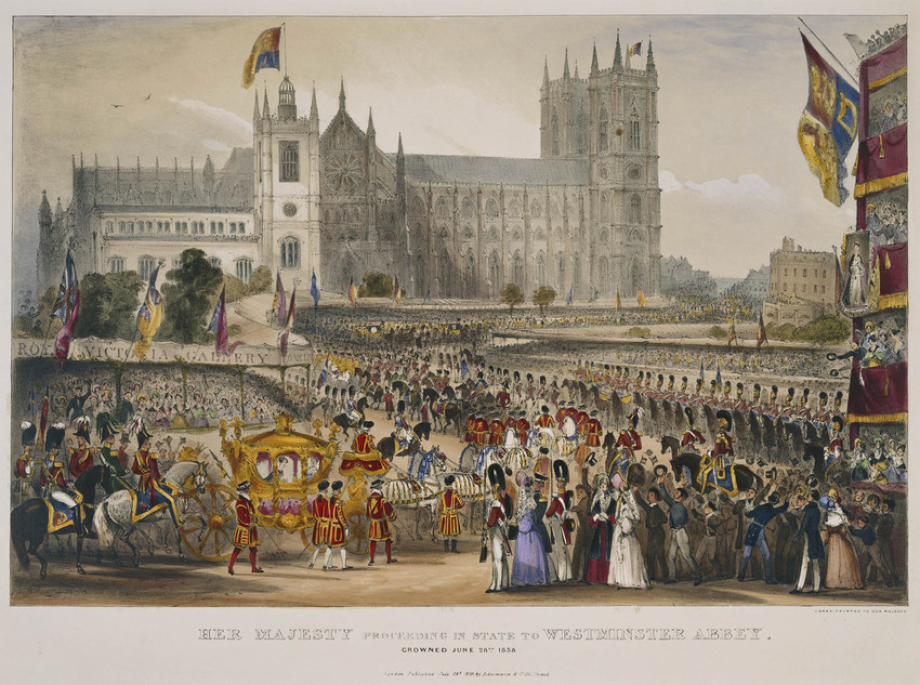
Extract from Queen Victoria's journal:
…At 10, I got into the State Coach with the Duchess of Sutherland & Lord Albemarle and we began our Progress. It was a fine day, & the crowds of people exceeded what I have ever seen, being even much greater than when I went to the City. There were millions of my loyal subjects, assembled in every spot, to witness the Procession. Their good humour & excessive loyalty was beyond everything. I really cannot say how proud I felt to be the Queen of such a nation. I was alarmed at times for fear the people would be crushed, in consequence of the tremendous rush & pressure. Reached the Abbey a little after ½ past 11, amidst deafening cheers. First went into a robing room, quite close to the entrance, where I met my 8 Train Bearers: Lady Caroline Lennox, Lady Adelaide Paget, Lady Mary Talbot, Lady Fanny Cowper, Lady Wilhelmina Stanhope, Lady Anne Fitzwilliam, Lady Mary Grimston, and Lady Louisa Jenkinson, all dressed alike & beautifully, in white satin, & silver tissue, with wreaths of silver wheat ears on the front of their hair & small ones of pink roses round the plait, behind. There were also trimmings of pink roses on the dresses. After putting on my Mantle, the young Ladies having properly got hold of it, & Lord Conyngham holding the ending of it, I left the Robing Room & the Procession started. The sight was splendid, the tiers of Peeresses, in their Robes, - quite beautiful, & the Peers on the opposite side. My young Train Bearers were always near me & helped me whenever I wanted anything. The Bishop of Durham stood on my one side, but never could tell me what was to take place. At the beginning of the Anthem, I retired with my Ladies & Train Bearers, into St. Edward’s Chapel, a small dark place, immediately behind the altar, took off my crimson Robe and Kirtle, & put on the Super Tunica of cloth of gold, also in the shape of a Kirtle, which went over a singular sort of little surplice of very fine linen trimmed with lace. I took off my Circlet of diamonds & proceeded bare headed, to the place before the altar, where I took my seat on St Edward’s Chair, & the Dalmatic Robe was clasped around me by the Lord Great Chamberlain. There followed all the various ceremonies, ending by the Crown being placed on my head, which I must own was the most beautiful, impressive moment. All the Peers & Peeresses put on their coronets, at the same instant. My excellent Lord Melbourne, who stood very close to me throughout the whole ceremony was quite overcome at this moment, & gave me such a kind, & I may say, fatherly look. The shouts, which were very great, the drums, the trumpets, the firing of the guns, - all at the same moment, rendered the spectacle most imposing…
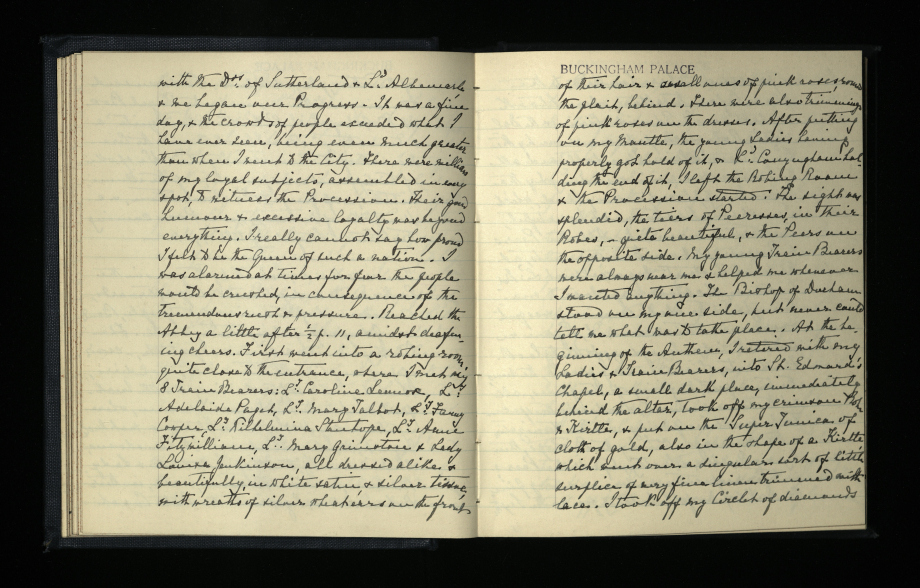
The handwriting in this journal is that of the Queen’s youngest daughter, Princess Beatrice, who on her mother’s instructions copied out the journal after the Queen’s death, destroying the originals.
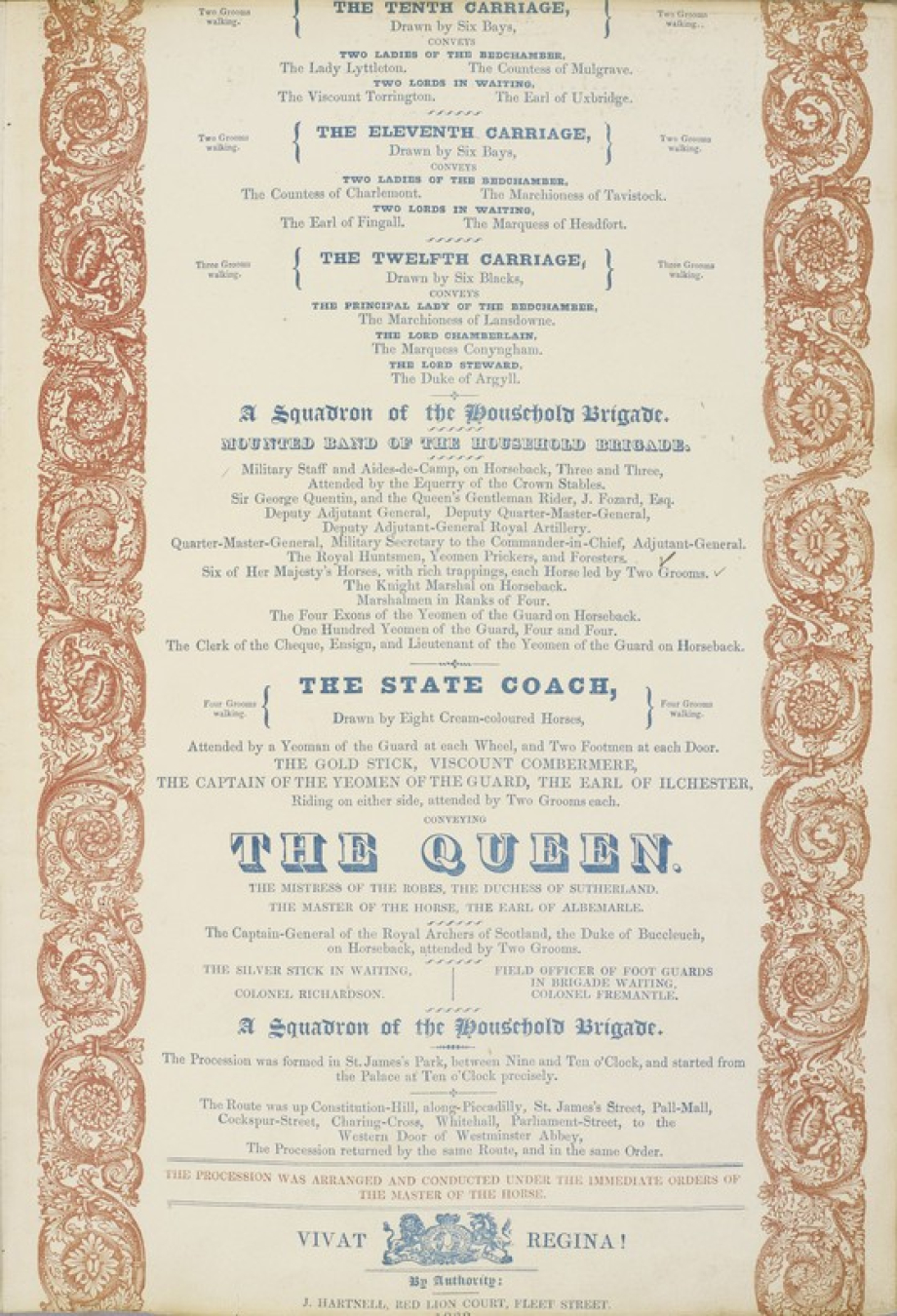
Extract from the State Procession for the Coronation of Queen Victoria in 1838.
King Edward VII and Queen Alexandra
As the eldest son of Queen Victoria, King Edward VII inherited the throne on her death in January 1901. The King was 59 years old at the time of accession and although he had led a somewhat scandalous social life as Prince of Wales, he was a popular Sovereign. Therefore the Coronation of King Edward VII and his consort, Queen Alexandra, due to be held on 26 June 1902, was widely anticipated by the public.
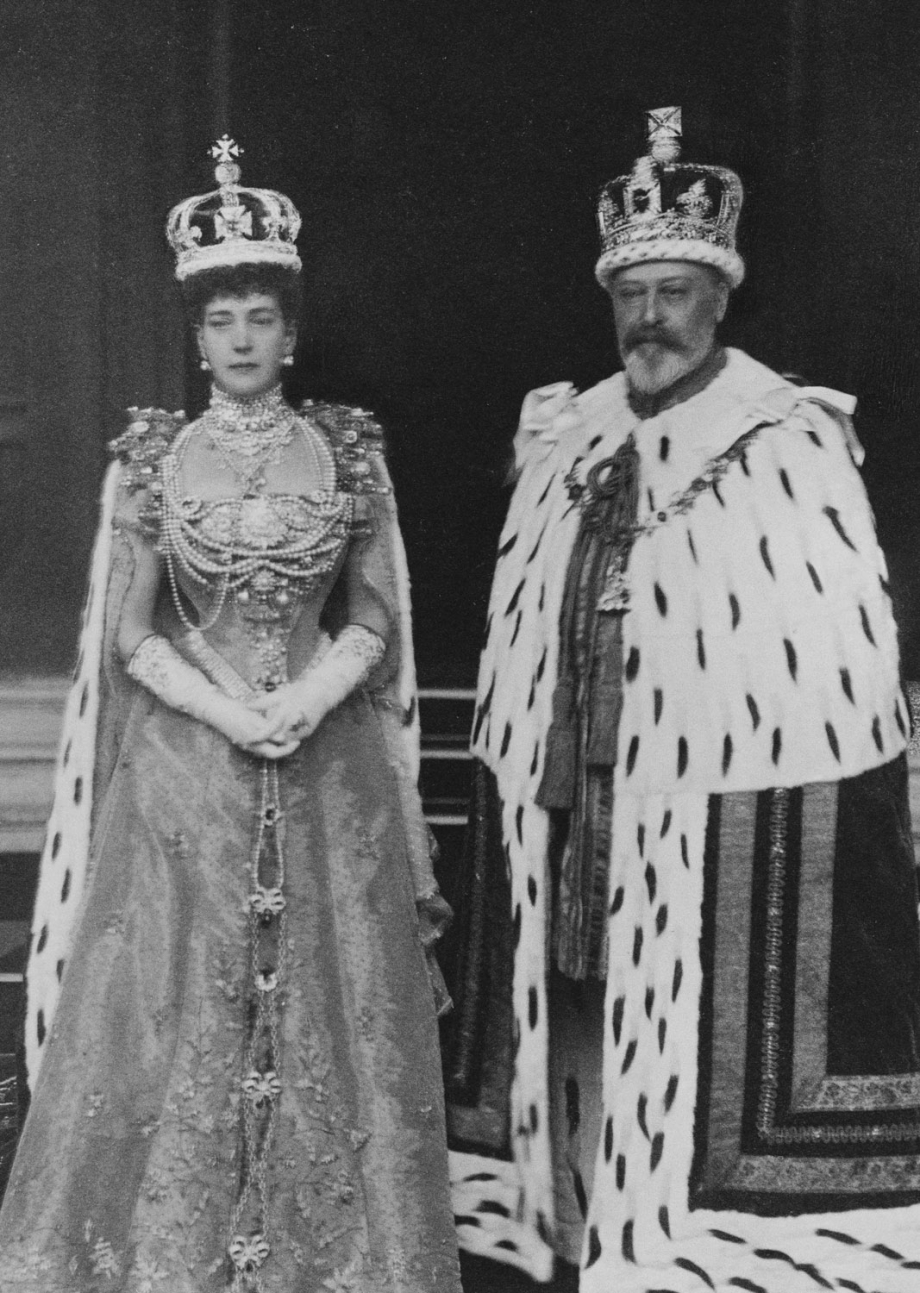
Preparations for the Coronation were in their final stages and Royal guests were arriving in London when King Edward VII became extremely ill. Very reluctantly the King was forced to cancel the Coronation ceremony and following a successful operation and a period of convalescence, the Coronation was rescheduled for 9 August.
Despite the fact he was still recovering from such a serious illness, King Edward VII refused to make any concessions to his role, other than to slightly shorten the actual Coronation service. Crowds lined the streets as the King and Queen made their way to Westminster Abbey in the Gold State Coach.
The finale of the Coronation was King Edward VII and Queen Alexandra’s appearance on the balcony of Buckingham Palace to the cheering crowds below, thus inaugurating a Royal tradition which continues to this day.
This draft letter from King Edward VII to his people was written on the eve of the rescheduled Coronation and was published widely in the press.
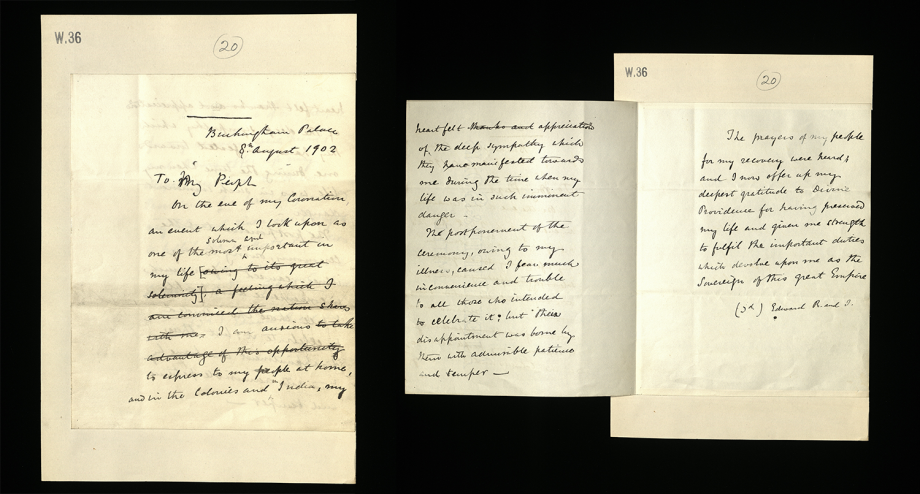
Buckingham Palace
8th August 1902
To My People
On the eve of my Coronation, an event which I look upon as one of the most solemn and important in my life [owing to its great solemnity], a feeling which I am convinced the nation shares with me, I am anxious to take advantage of this opportunity to express to my people at home, and in the Colonies and in India, my heart felt thanks and appreciation of the deep sympathy which they have manifested towards me during the time when my life was in such imminent danger.
The postponement of the ceremony, owing to my illness, caused I fear much inconvenience and trouble to all those who intended to celebrate it; but their disappointment was borne by them with admirable patience and temper –
The prayers of my people for my recovery were heard; and I now offer up my deepest gratitude to Divine Providence for having preserved my life and given me strength to fulfil the important duties which devolve upon me as the Sovereign of this great Empire.
(Sd. ) Edward R. and I.
Entry from the diary of George, Prince of Wales (later King George V) for 9 August 1902 describing ‘Dear Papa & Mama’s Coronation Day’.

Saturday Aug 9th. York House. London.
Dear Papa & Mama’s Coronation Day
A never to be forgotten day. It was fine but cloudy & not hot, there was a slight shower in the evening. Breakfast with Alge at 9.15. All the relations & Foreigners started from B.P. in procession at 10.15. May & I left Y.H. at 10.45 only 3 carriages with an escort, our Household in the two first; we went by the Mall, thro’ the Horse Guards, & Whitehall to the Abbey where we arrived at 11.0. Papa & Mama arrived at 11.30. The Coronation Service began at 11.45. it was most beautifully done & the singing & music very fine. And it was a magnificent spectacle. I sat just in front of the Peers with uncle Arthur on my right & uncle George on my left all wearing Peers’ robes. When the Archbishop of Canterbury put the Crown on Papa’s head, the electric light was turned on, very fine effect & all us Peers put on our coronets. I had to do Homage first, Papa kissed me & I kissed his hand. When Mama’s crown was put on by the Archbishop of York, all the Peeresses put on their coronets. We left the Abbey in three processions, 1st Papa & Mama, 2nd May & I & 3rd, All the family, we went by Whitehall, Pall Mall St James’ St., Piccadilly & Constitution Hill, all the streets were lined with troops which were beautifully decorated & there were very large crowds who were most enthusiastic. We only got home to Y.H. past 3.0. had lunch which we were quite ready for. David & Bertie were both in the Abbey in the Princesses’ box with May. At 5.0. May & I drove to B.P. to see Papa & Mother dear, & he was not a bit tired & was in excellent spirits, he gave us all the Coronation medal & he also gave me a new Order the Victorian chain which he has instituted, which consists of a gold chain to be worn round the neck with a small badge of the Victorian order, like Hohenzollern Ketter. Saw Toria. Came home at 6.0. young Arthur came to tea. Every house is illuminated tonight & there are enormous crowds in the streets. We dined upstairs with Alge. Bed at 11.30.
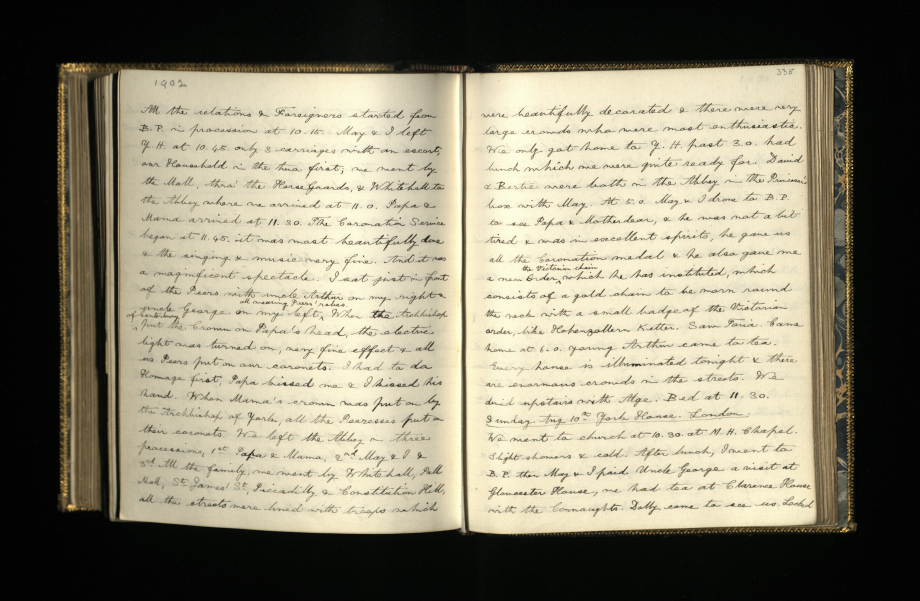
King George V and Queen Mary
King George V and Queen Mary were crowned at Westminster Abbey on the 22 June 1911, travelling in the Gold State Coach to and from the Abbey in a ceremonial State Procession. Queen Mary recorded in her diary her impressions of the day “The ceremony was beautiful & most impressive…Magnificent reception both going & coming back”.
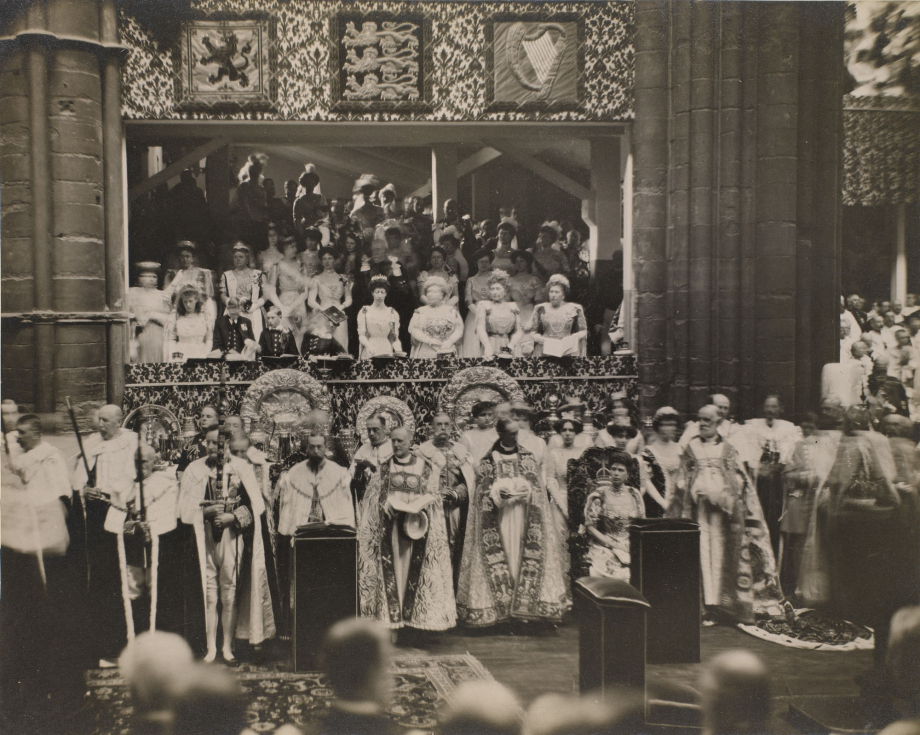
On the following day Their Majesties drove in an open carriage through the streets of London, which the King described as “a sight which I am sure could never be seen in any other country in the world.” On 24 June they attended a Naval Fleet Review at Spithead and on 29 June a Thanksgiving Service at St Paul’s Cathedral.
Entry from the diary of King George V, for 22nd June 1911
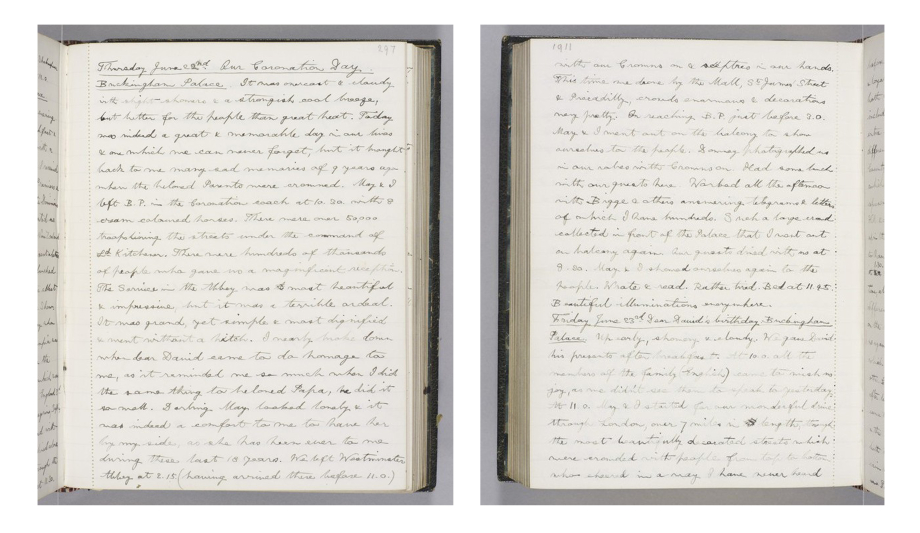
Thursday June 22nd. Our Coronation Day. Buckingham Palace.
It was overcast & cloudy with slight showers & a strongish cool breeze, but better for the people than great heat. Today was indeed a great & memorable day in our lives & one which we can never forget, but it brought back to me many sad memories of 9 years ago when the beloved Parents were crowned. May & I left B.P. in the Coronation coach at 10.30. with 8 cream coloured horses. There were over 50,000 troops lining the streets under the command of Ld. Kitchener. There were hundreds of thousands of people who gave us a magnificent reception. The Service in the Abbey was most beautiful & impressive, but it was a terrible ordeal. It was grand, yet simple & most dignified & went without a hitch. I nearly broke down when dear David came to do homage to me, as it reminded me so much when I did the same thing to beloved Papa, he did it so well. Darling May looked lovely & it was indeed a comfort to me to have her by my side, as she has been ever to me during these last 18 years. We left Westminster Abbey at 2.15. (having arrived there before 11.0) with our Crowns on & sceptres in our hands. This time we drove by the Mall, St James’ Street & Piccadilly, crowds enormous & decorations very pretty. On reaching B.P. just before 3.0. May & I went out on the balcony to show ourselves to the people. Downey photographed us in our robes with Crowns on. Had some lunch with our guests here. Worked all the afternoon with Bigge & others answering telegrams & letters of which I have hundreds. Such a large crowd collected in front of the Palace that I went out on balcony again. Our guests dined with us at 8.30. May & I showed ourselves again to the people. Wrote & read. Rather tired. Bed at 11.45. Beautiful illuminations everywhere.
This plan shows the Children’s Fete held at Crystal Palace on 30 June 1911, during which King George V and Queen Mary hosted approximately 100,000 London school children to tea at the Festival of Empire.
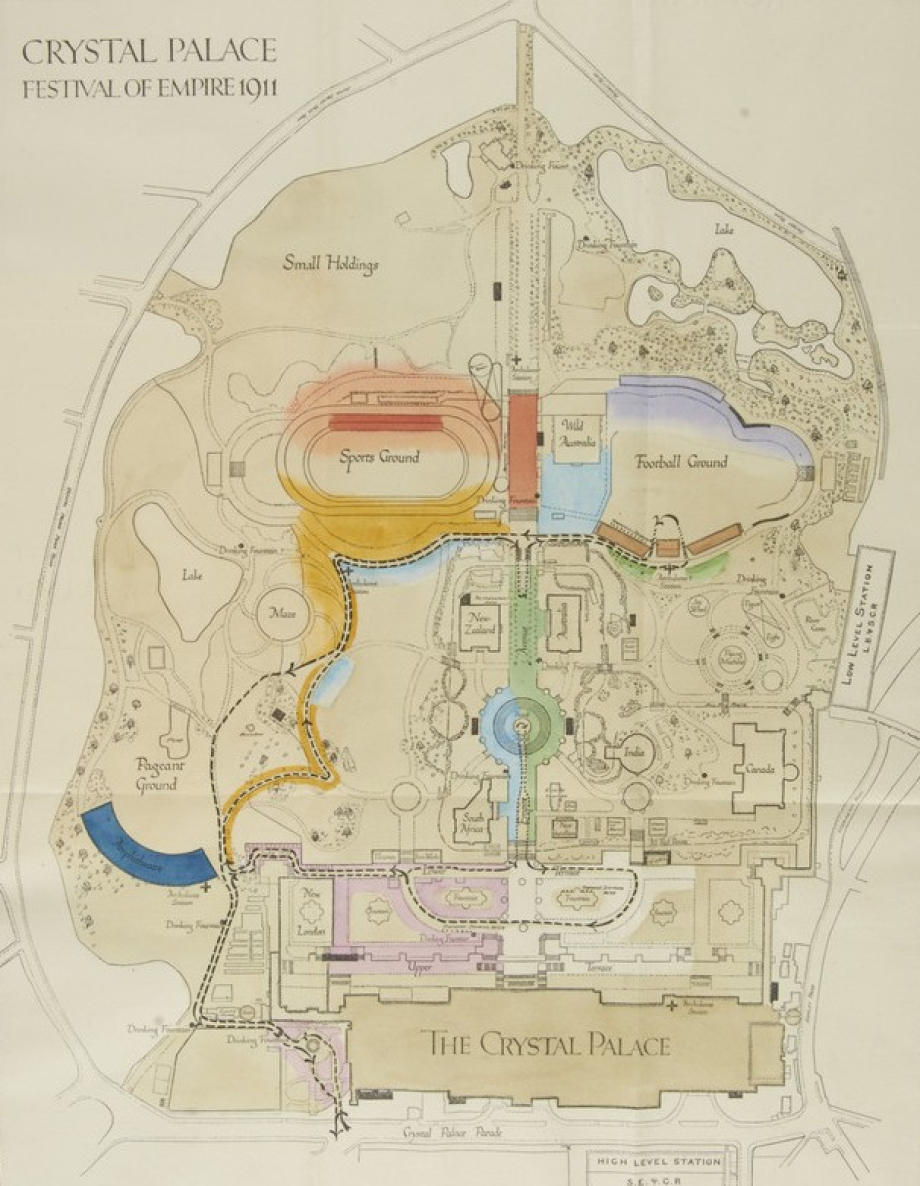
King George VI and Queen Elizabeth
King George VI came to the throne following the unexpected abdication of his elder brother, King Edward VIII, on 11 December 1936. Formerly known as Prince Albert, Duke of York, the decision to take the name of his father, King George V, reflected the new King’s desire to emphasise the continuity of the monarchy and restore public confidence.
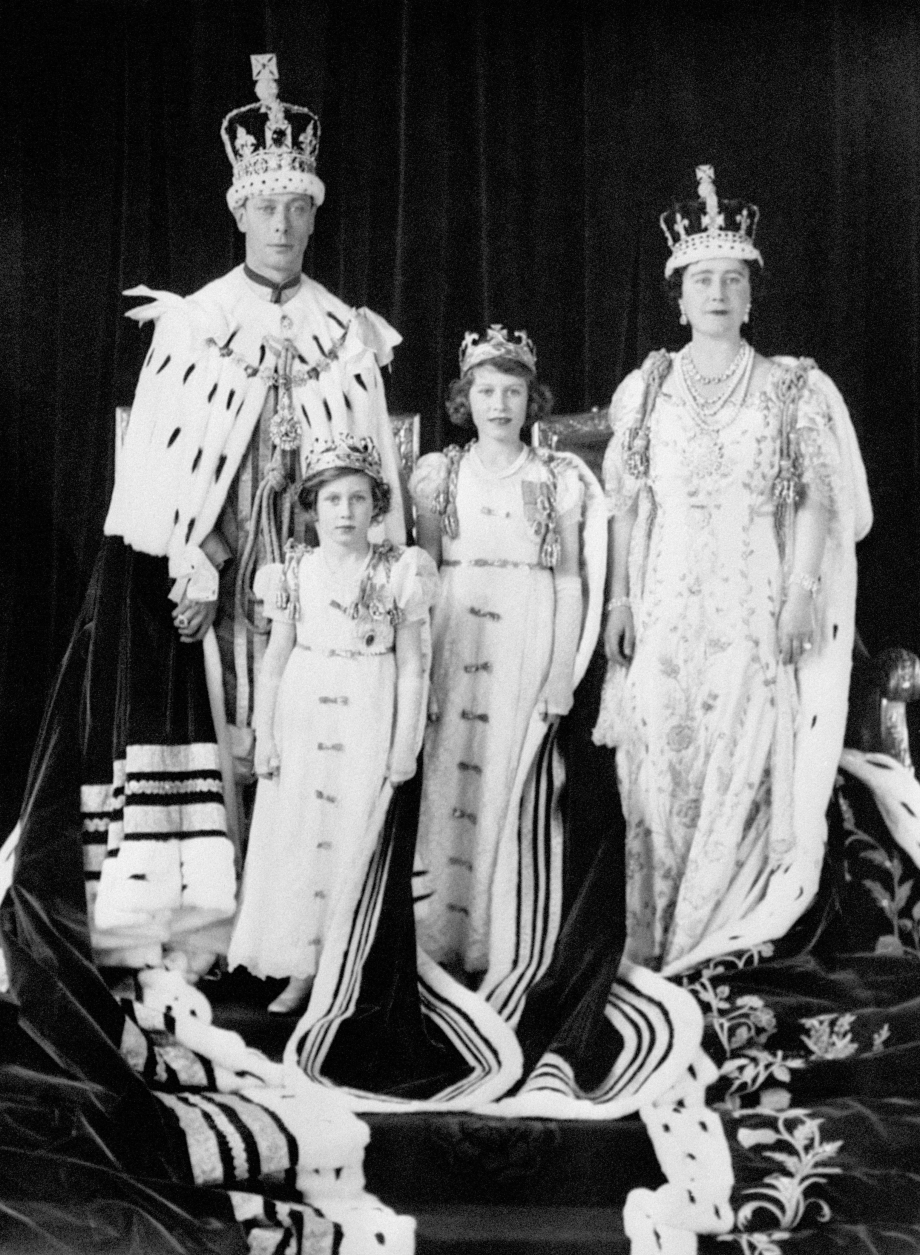
The Coronation of King George VI and his consort, Queen Elizabeth, took place at Westminster Abbey on 12 May 1937, the date originally chosen for the Coronation of King Edward VIII. In a deliberate show of support for her son, Queen Mary broke with the tradition requiring the widow of the late Sovereign to not attend the Coronation of his successor, and instead watched the ceremony from the Royal Gallery, as did the King and Queen’s daughters, Princess Elizabeth and Princess Margaret.
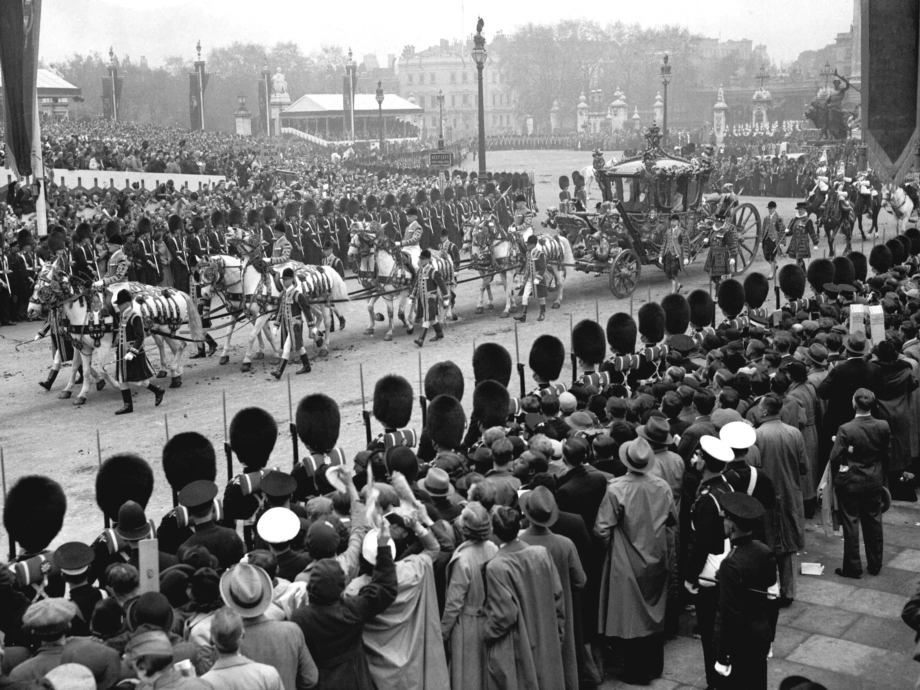
The Coronation ceremony was conducted by the Most Reverend Cosmo Lang, Archbishop of Canterbury, and for the first time the Coronation was recorded by cinematography, while the Coronation procession was televised by the BBC in the organisation’s first ever outside broadcast.
The young Princess Elizabeth wrote an account of her parents Coronation:
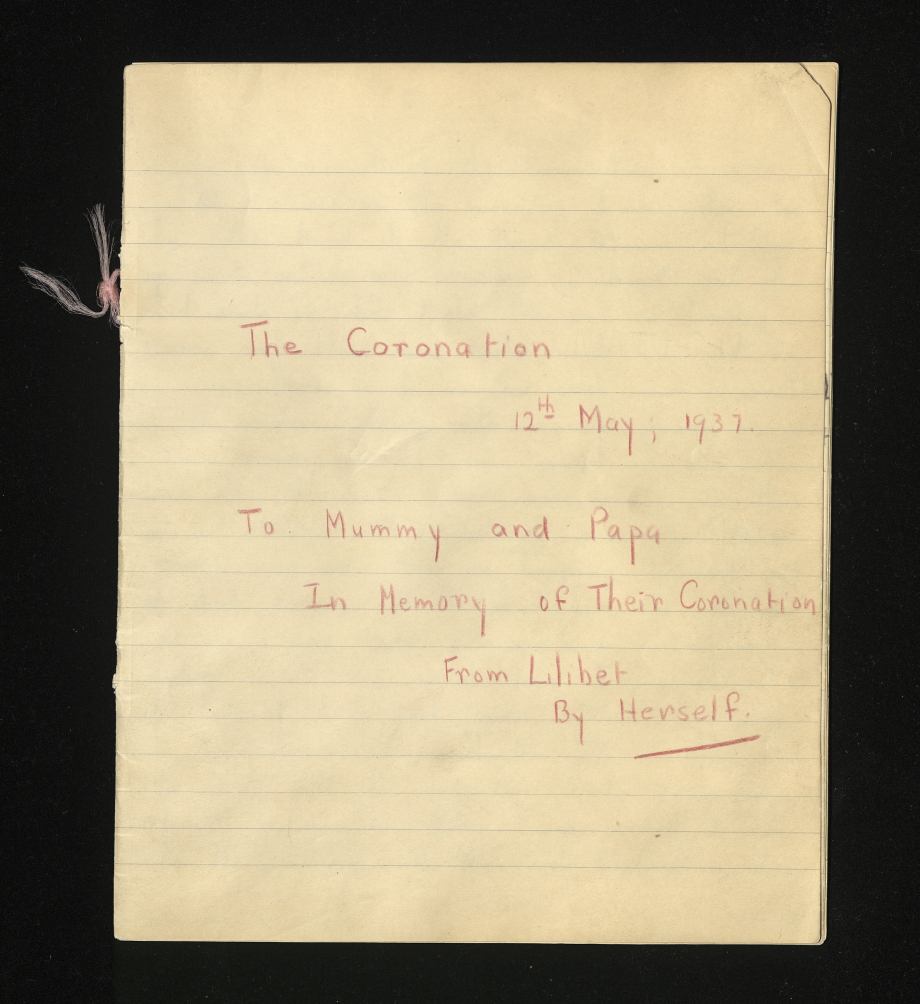
I thought it all very, very wonderful and i expect the Abbey did too. The arches and beams at the top were covered with sort of haze of wonder as Papa was Crowned, at least I though so.
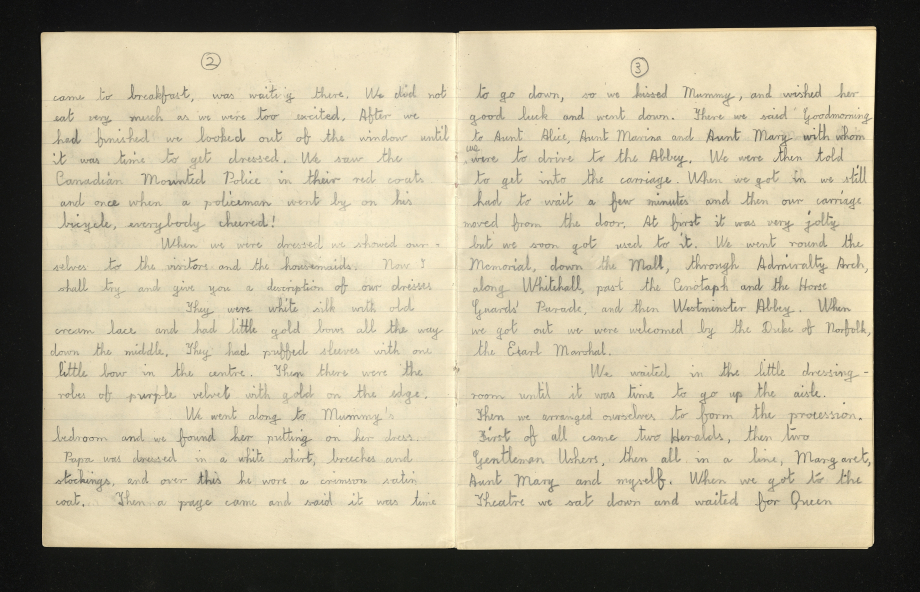
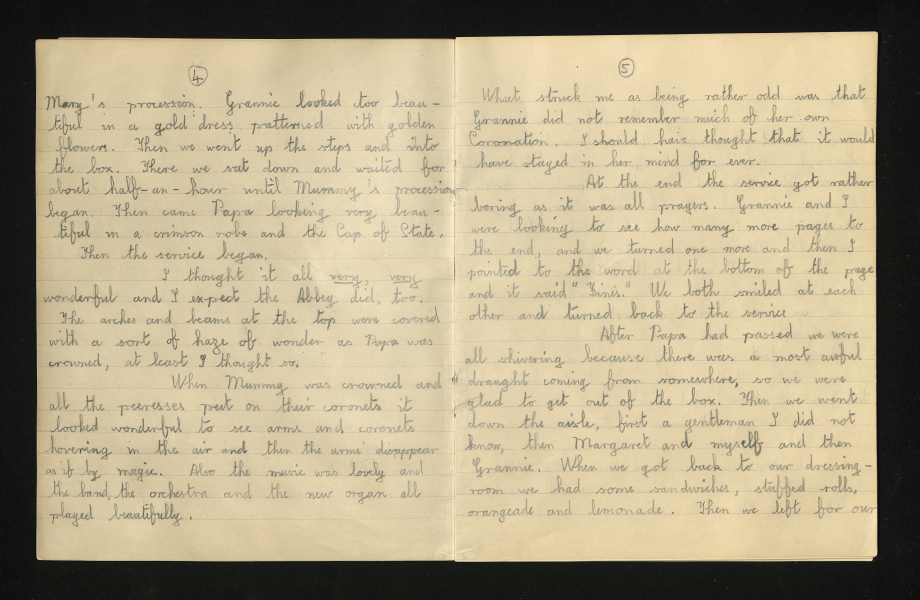
On the evening of Coronation Day, King George VI made a live broadcast from Buckingham Palace which was heard throughout the British Empire. This is a transcript of the King’s broadcast.
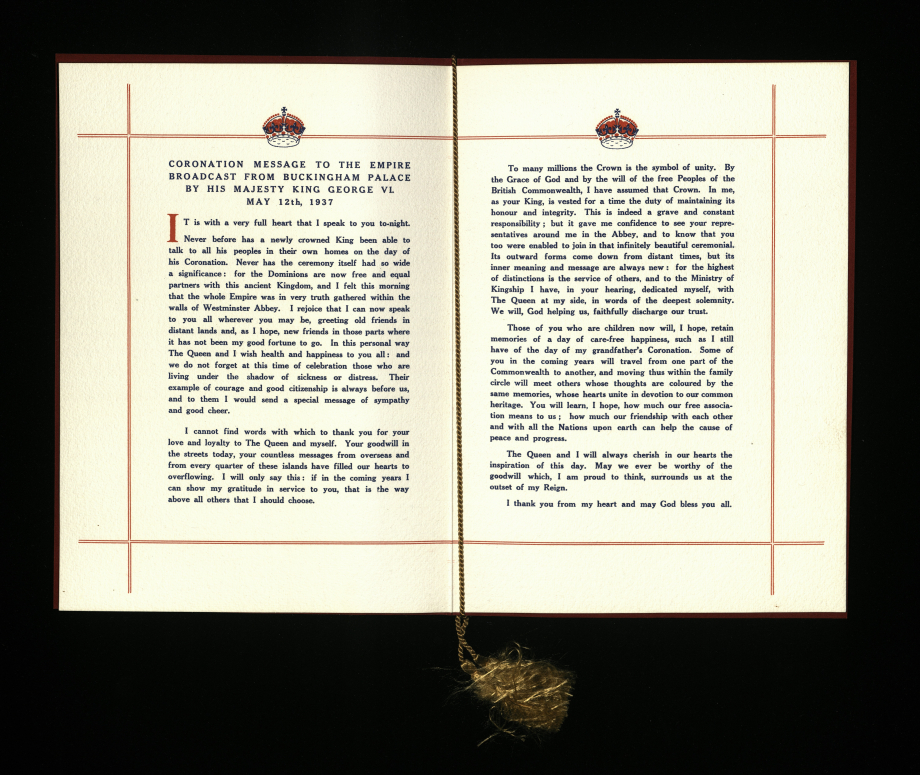
Extracts from a letter from the Archbishop of Canterbury, Most Reverend Cosmo Lang, to King George VI and Queen Elizabeth, written on the evening of their Coronation Day. The Archbishop of Canterbury conducted the Coronation ceremony and crowned the new Sovereign.
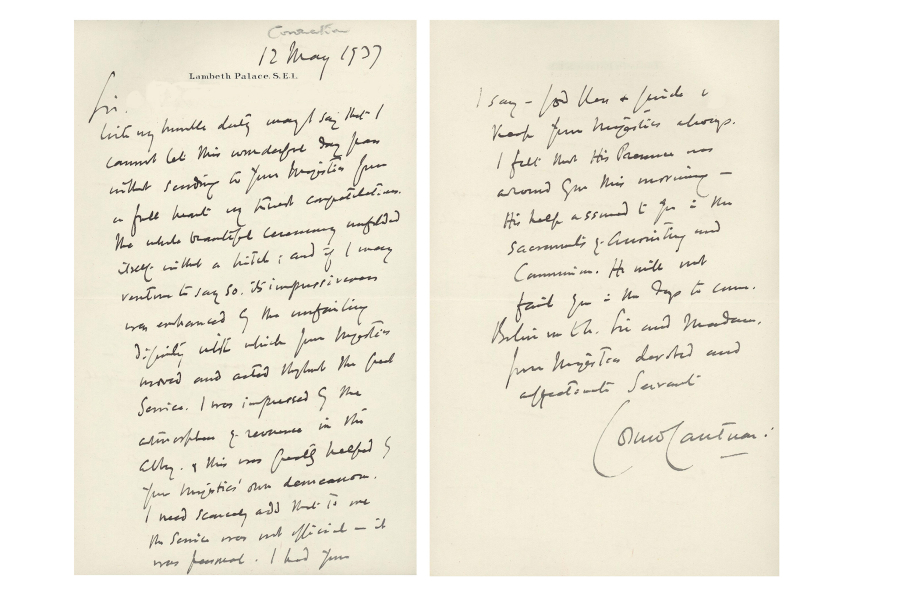
Sir,
With my humble duty may I say that I cannot let this wonderful day pass without sending to Your Majesties from a full heart my truest congratulations. The whole beautiful ceremony unfolded itself without a hitch; and if I may venture to say so, its impressiveness was enhanced by the unfailing dignity with which Your Majesties moved and acted throughout the great Service. I was impressed by the atmosphere of reverence in the Abbey & this was greatly helped by Your Majesties’ own demeanour. I need scarcely add that to me the Service was not official – it was personal. I had Your Majesties throughout in my mind & heart…
…I can only say my heart is very full when this evening I say – God bless & guide & keep your Majesties always. I felt that His Presence was around you this morning – His help assured to you in the Sacraments of Anointing and Communion. He will not fail you in the days to come. Believe me to be Sir and Madam, Your Majesties devoted and affectionate Servant.
Cosmo Cantuar
Queen Elizabeth II
Queen Elizabeth II was crowned at Westminster Abbey on the 2 June 1953. This was the first time that the ceremony was to be televised and prior to the Coronation, license holders doubled from approximately 1.5 million to 3 million in preparation for the day-long coverage of the procession, service and crowning.
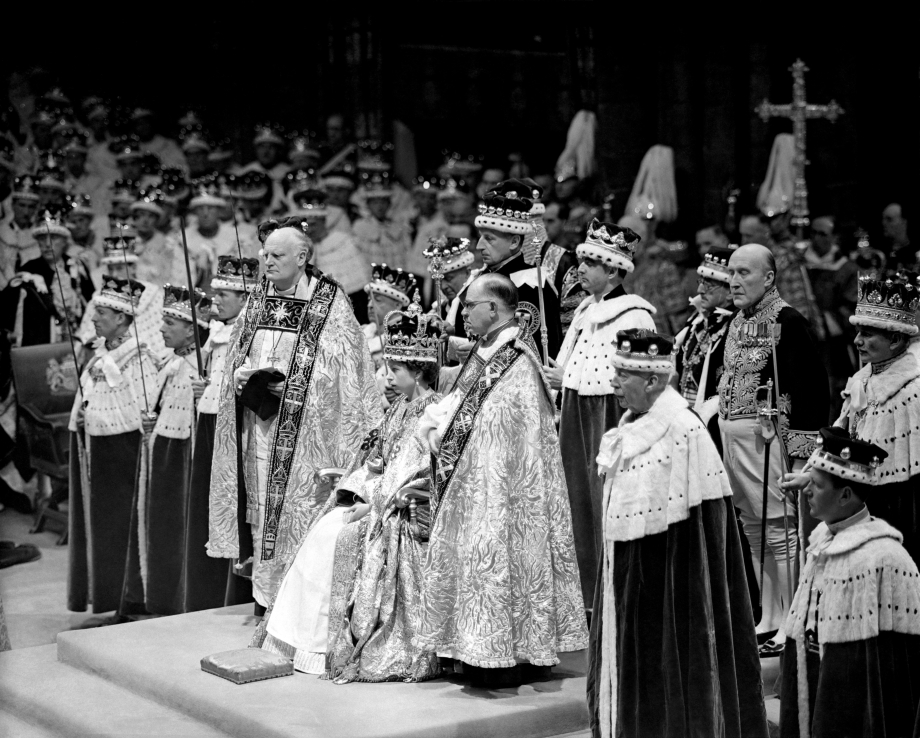
An estimated 27 million people watched the Coronation live, over half the population of Britain, while a further 11 million people listened on the radio. Thousands of people celebrated throughout the country and the Commonwealth with street parties.
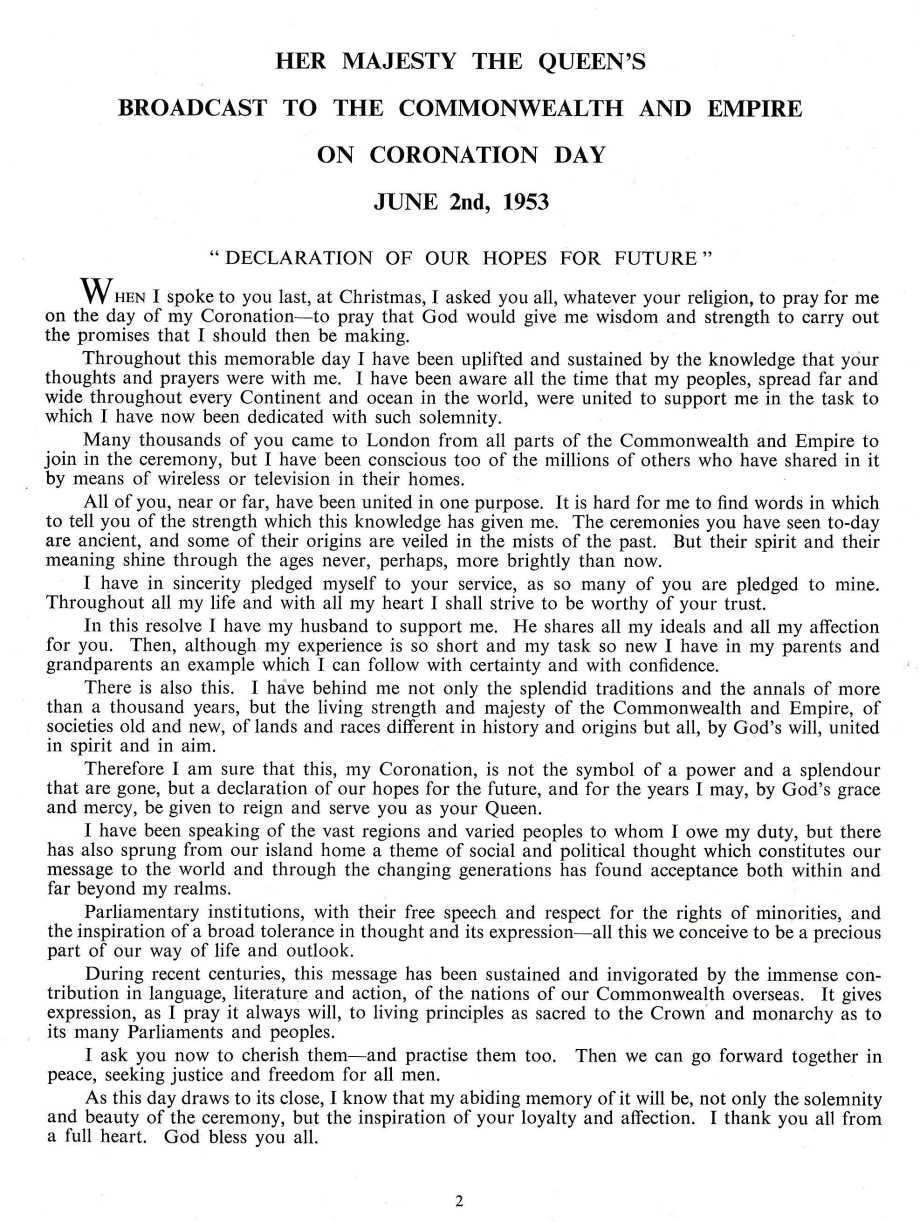
On the evening of her Coronation on 2 June 1953, The Queen made a radio broadcast reflecting on the events of the day, thanking the public for their support and promising to serve the Nation.
The night before the Coronation, people camped along The Mall to catch a glimpse of the procession, and some were so keen that they slept outdoors for two days along the route.
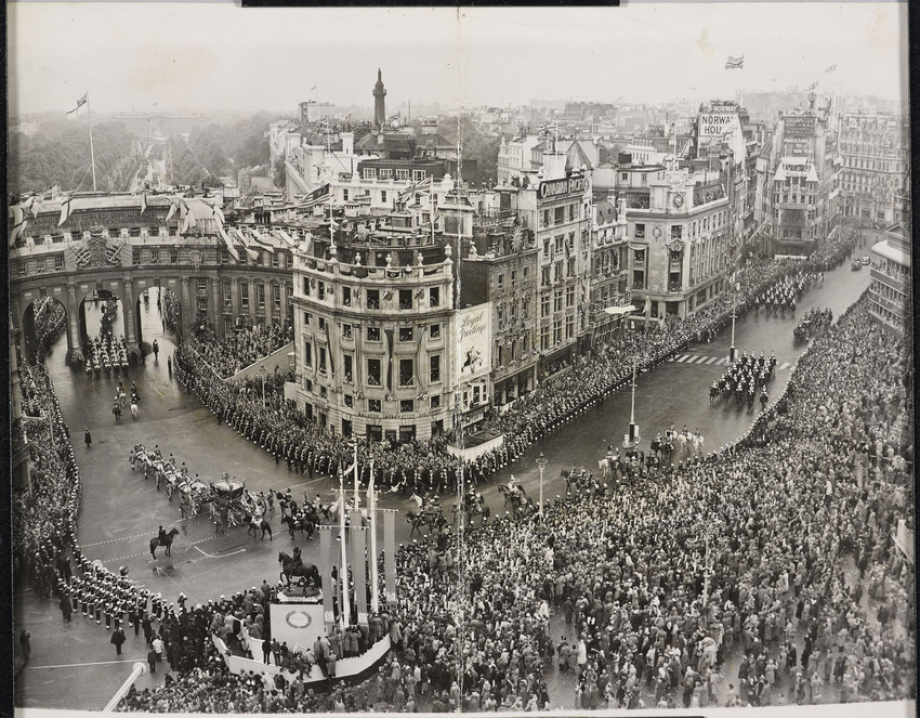
In this photograph of the 1953 Coronation procession, the Gold State Coach is about to drive through Marble Arch, and Buckingham Palace can be seen in the background with thousands of people lining the Mall. The Gold State Coach was drawn by eight grey geldings: Cunningham, Eisenhower, Tovey, Snow White, Cranford, Tipperary, Tedder and McCreery.
The return route from Westminster Abbey to Buckingham Palace had been designed so that The Queen and her procession could be seen by as many people as possible. The 7.2 km [4.5 miles] route took the 16,000 participants two hours to complete.
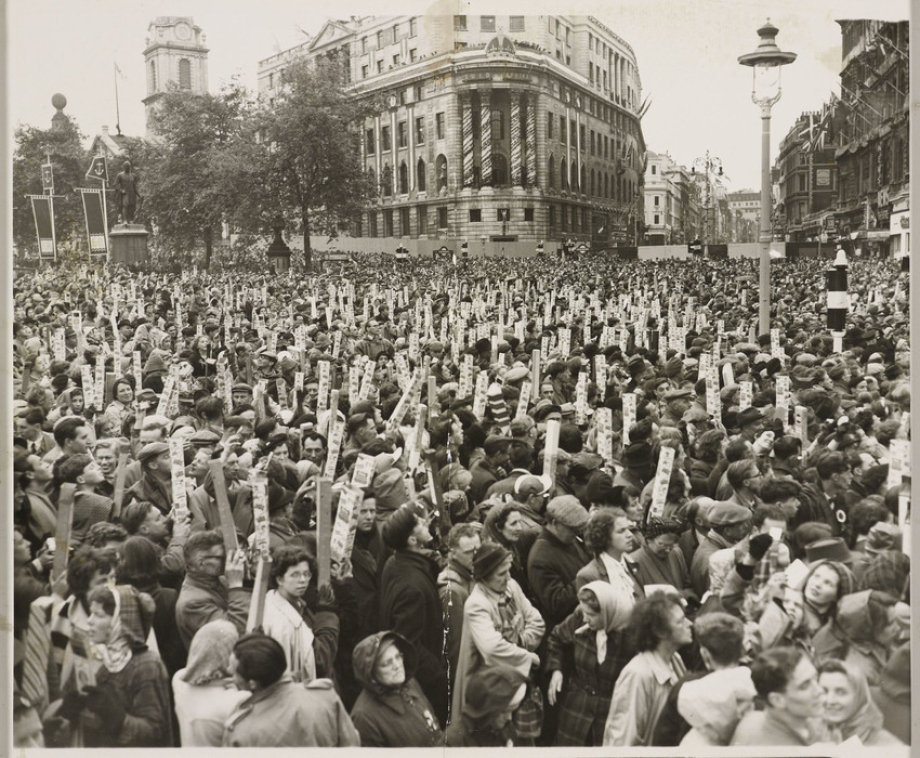
Photograph of the vast crowds standing at Trafalgar Square, using mirrors to watch the procession for the Coronation of Her Majesty Queen Elizabeth.
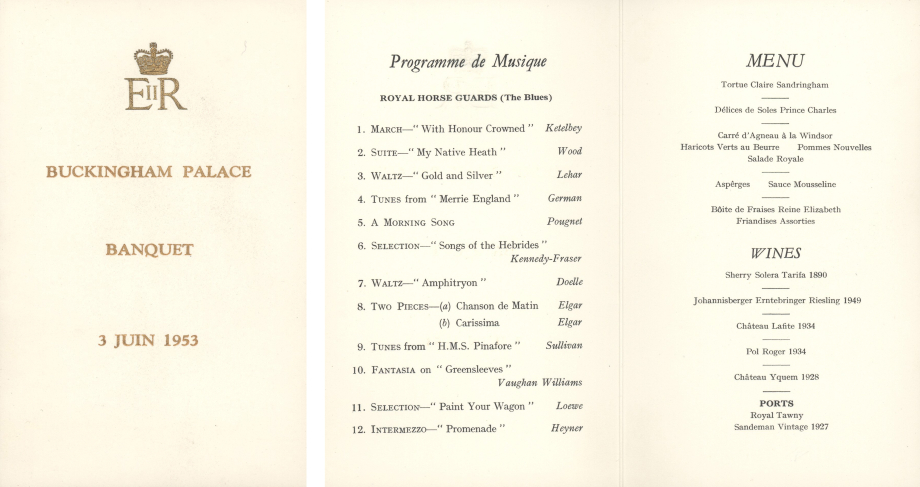
The Queen hosted two Banquets at Buckingham Palace in honour of the Foreign and Commonwealth Representatives who attended Her Majesty’s Coronation. One hundred and twenty-nine nations and territories were officially represented at the Coronation service.

